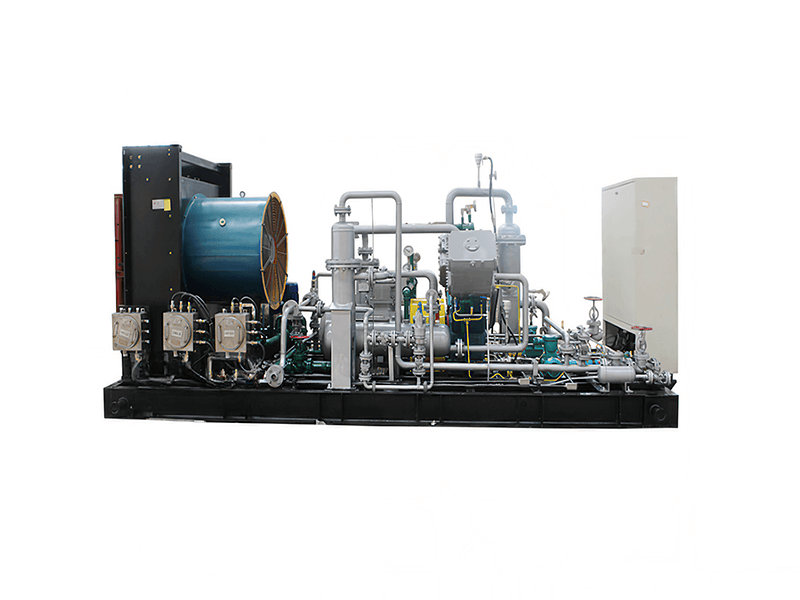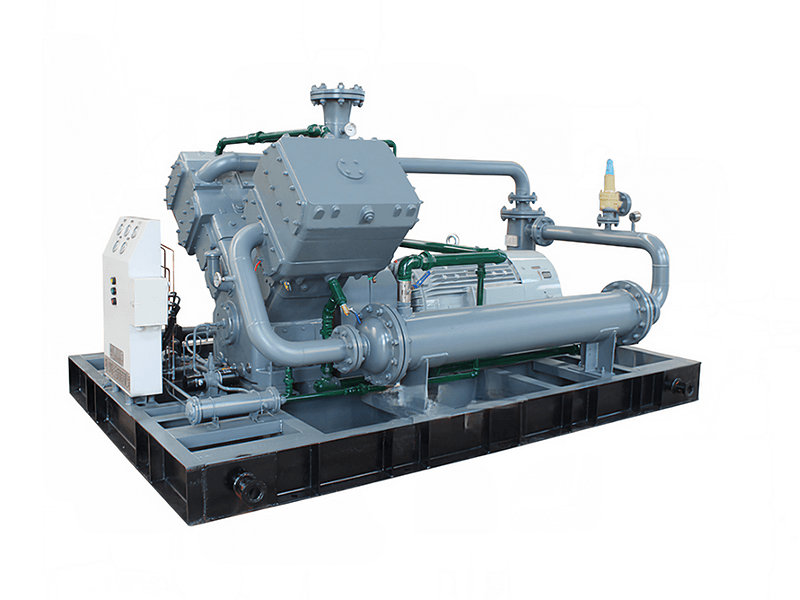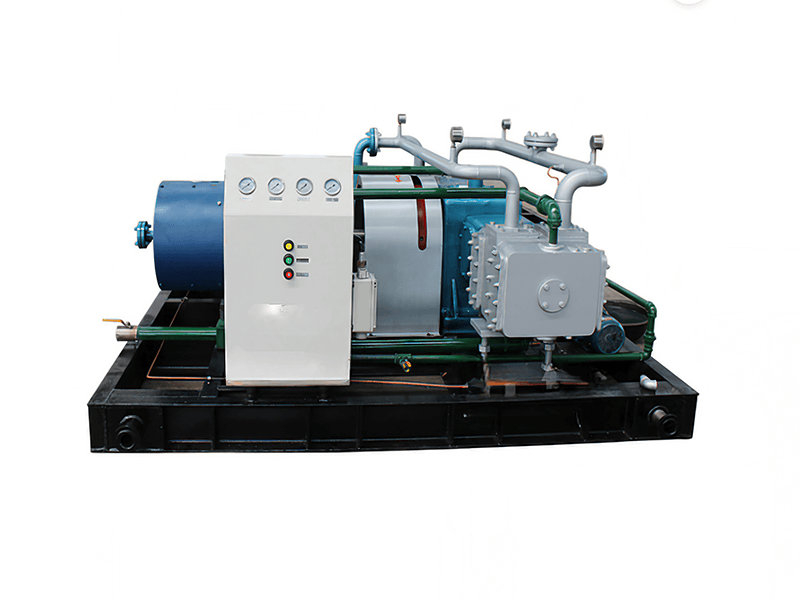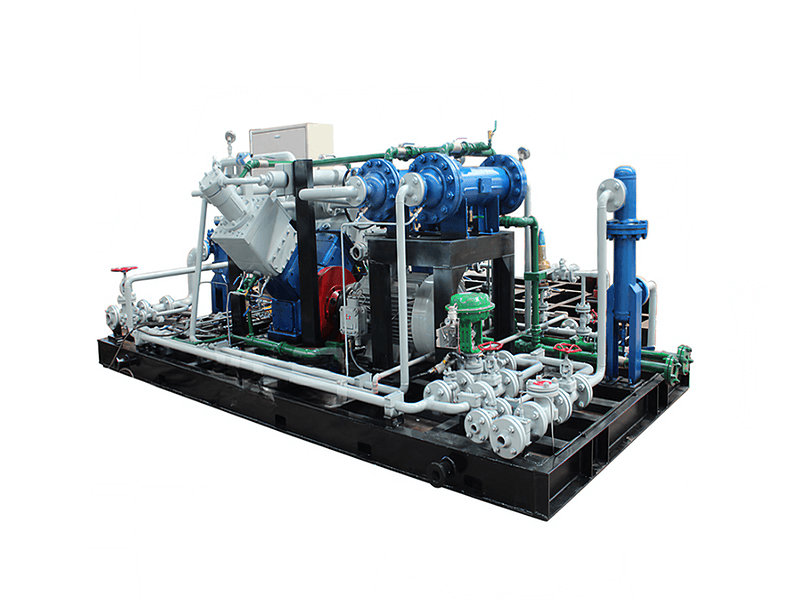Helium compressors play an indispensable role in modern scientific research and industrial fields, with their application scope covering multiple important areas from basic scientific research to high-end manufacturing. Understanding these application scenarios helps to better grasp the technical requirements and development direction of helium compressors. With technological progress and industrial upgrading, the application fields of helium compressors are continuously expanding, and the performance requirements are increasingly demanding.
cryogenic physics research
In the field of, helium compressors are the core equipment of helium liquefaction systems. By compressing helium to approximately 2.0 MPa, followed by multi-stage expansion and throttling processes, the liquefaction of helium is ultimately achieved, obtaining an ultra-low temperature environment of 4.2 K (-268.95°C). This ultra-low temperature condition provides an essential foundation for superconductivity research, quantum computing, and material property studies. For example, the Large Hadron Collider (LHC) uses multiple high-power helium compressors to provide cryogenic cooling guarantee for its superconducting magnet system. In these large-scale scientific research facilities, helium compressors need to operate continuously for tens of thousands of hours, requiring extremely high reliability. The compressor design must consider the special material properties at cryogenic temperatures, while ensuring stable discharge pressure and flow rate during long-term operation.
Nuclear Magnetic Resonance (NMR) and Magnetic Resonance Imaging (MRI)
systems are another important application field for helium compressors. These systems use superconducting magnets to generate strong magnetic fields and require a continuous supply of liquid helium to maintain the superconducting state of the magnets. In a closed-loop refrigeration system, the helium compressor is responsible for recompressing the evaporated helium gas, which is then reliquefied by a cryocooler, enabling helium recycling. This closed-cycle system significantly reduces operating costs; a standard 3T MRI unit can save hundreds of thousands of dollars annually in helium procurement costs through such a system. In modern medical equipment, noise control of the helium compressor is particularly important, typically requiring operating noise to be controlled below 65 decibels to ensure a comfortable medical environment. Simultaneously, the compressor must also possess rapid start-up capability and precise pressure regulation to handle load changes during equipment operation.

semiconductor manufacturing industry
In the, helium compressors play a critical role. High-purity helium is used as a purge and protective gas during wafer processing, and compressors ensure that helium maintains the required pressure and purity during recycling. Especially in key processes such as plasma etching and chemical vapor deposition, the stable supply and precise pressure control of helium directly affect product yield. Modern semiconductor factories typically employ centralized gas supply systems equipped with multiple helium compressors in a redundant configuration to ensure uninterrupted gas supply. In these applications, the purity requirements for helium are extremely high, often needing to reach 99.9999% (6N) grade, which necessitates special oil-free designs and surface treatment processes for the compressors. Practices from a well-known semiconductor manufacturing company show that after adopting high-performance helium compressors, its wafer production yield increased by approximately 1.5%, while helium consumption decreased by 30%.
aerospace field
Thealso relies heavily on helium compressors. In rocket fuel loading systems, helium is used as a pressurant gas to push fuel into the engines, and the compressor is responsible for compressing the helium to a high-pressure state of 15-35 MPa. Helium is also extensively used in wind tunnel tests, where compressors regulate helium flow and pressure to simulate aerodynamic characteristics under different flight conditions. These applications place extremely high demands on compressor reliability and safety, often requiring ASME "U" Stamp certification. In aerospace applications, compressors also need to possess characteristics of vibration resistance and shock resistance, and be able to operate stably in various harsh environments. For example, SpaceX uses specially designed helium compressors in its rocket launch systems that can maintain stable performance under extreme conditions.
new energy field
In recent years, the application of helium compressors in thehas also become increasingly widespread. In nuclear fusion experimental devices, helium is used as a coolant to remove the large amount of heat generated by the first wall materials, and compressors ensure the stable operation of helium in a closed cycle. High-temperature gas-cooled reactor nuclear power stations also use helium as a working fluid, and their compressor systems need to withstand operating temperatures as high as 750°C, posing special challenges for material selection and cooling system design. In these emerging energy fields, helium compressors not only need to meet high-performance requirements but also consider long-term operational economy and maintainability. For instance, in the ITER (International Thermonuclear Experimental Reactor) project, the design life of helium compressors is required to be over 30 years, during which extremely high operational reliability must be maintained.
Beyond the main application areas mentioned above, helium compressors also play key roles in several other important scenarios. In deep-sea exploration, they compress and recycle breathing gas mixtures for submersibles; in meteorological observation, they are used in inflation systems for high-altitude balloons; in vacuum technology, they serve as backing pumps for molecular pumps. These diverse application scenarios impose varying technical requirements on helium compressors, driving continuous innovation and development in compressor technology.
As application fields continue to expand, new trends are emerging in the technological development of helium compressors. Intelligent control systems are becoming standard, ensuring compressors always operate under optimal conditions through real-time monitoring and intelligent regulation. Increasing demands for energy saving and environmental protection are also prompting compressor manufacturers to develop more efficient and environmentally friendly products. In the future, with the application of new materials and processes, the performance of helium compressors will be further enhanced, and their application scope will continue to grow.

























